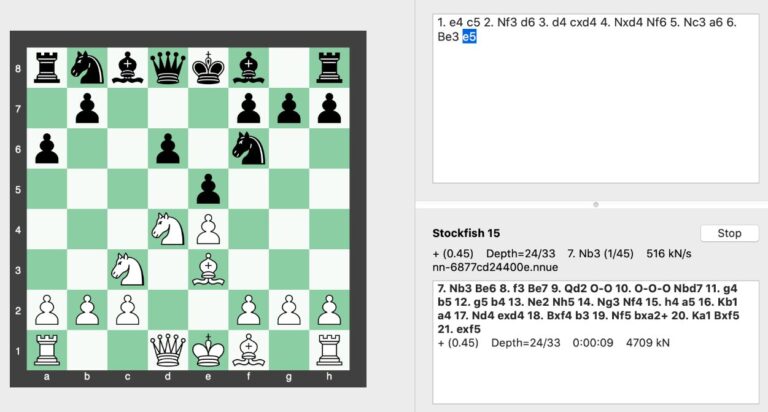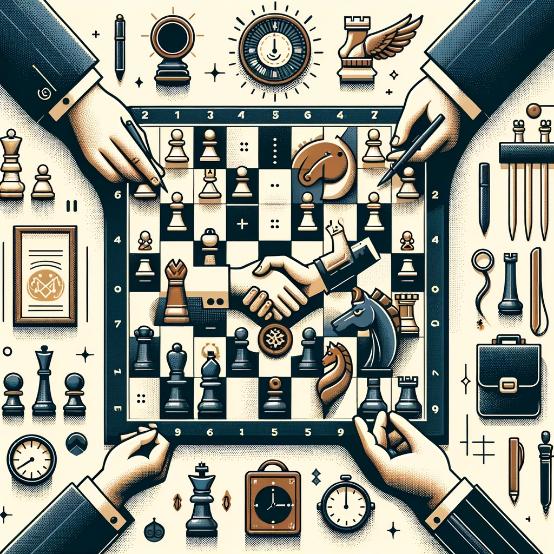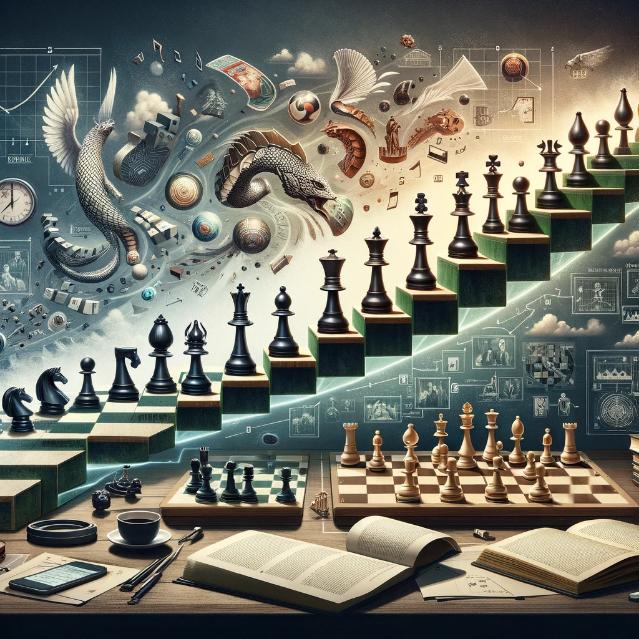The saga of chess, a game that has seduced minds and challenged intellects for centuries, is rich with legend, lore, and a dash of mystery. As an International Chess Master, I’ve traversed the realms of strategy and competition, always intrigued by the origins of the very game that defines these concepts. Today, we embark on a chronological journey to uncover the roots of chess, delving deep into the annals of history to answer the question: Who invented chess?
The Ancient Beginnings: 6th Century India
Our quest begins in the lush landscapes of ancient India, around the 6th century AD. Here, in the courts and cultural epicenters of the Gupta Empire, chess is believed to have originated. Known as Chaturanga, which means “four arms,” the game was a reflection of the contemporary battlefield, incorporating the four branches of the army—infantry, cavalry, elephantry, and chariotry—into its gameplay. While no single individual can be credited with Chaturanga’s invention, it is the collective genius of this ancient civilization that gave birth to the game.
The Persian Chapter: 7th Century
As the tendrils of trade and conquest spread Chaturanga from India, it found a new home in Persia, evolving into Shatranj. The Persians not only embraced the game but also contributed significantly to its development. It was here that the concepts of ‘check’ and ‘checkmate’ first emerged, refining the game’s objectives and strategy. The fall of the Persian Empire to the Arabs in the 7th century marked the next chapter in chess’s journey, as the conquerors took up the game and spread it across the vast Islamic Caliphate.
Medieval Europe: The 15th Century Renaissance
Chess continued its westward voyage, reaching the shores of Europe in the Middle Ages. It was in the 15th century, however, that the game underwent radical transformations in Spain and Italy, morphing into a form recognizable today. The queen, previously one of the weakest pieces on the board, was empowered, mirroring the rising influence of queens in European societies. This era of intense innovation and adaptation in chess mirrored the broader Renaissance period, characterized by a flourishing of arts, science, and, indeed, the art of war.
The Age of Enlightenment: Standardization and Codification
The 19th century heralded the dawn of competitive chess, with the establishment of standardized rules and the organization of the first official chess tournament in London, 1851. This period marked the emergence of the chess prodigy Paul Morphy, often considered the first unofficial World Chess Champion. The codification of chess during the Enlightenment reflected the era’s emphasis on reason, individualism, and intellectual progress.
The Modern Era: Globalization and Technological Revolution
The 20th and 21st centuries have seen chess become a truly global phenomenon, transcending geographical, cultural, and social boundaries. The advent of computer technology and the internet has revolutionized how chess is played, studied, and enjoyed, with artificial intelligence like IBM’s Deep Blue, Stockfish and Google’s AlphaZero pushing the boundaries of strategic depth and complexity.
Conclusion: A Legacy Beyond Names
So, who invented chess? The answer transcends individual contribution, stretching across continents and centuries. Chess is a testament to human creativity, strategic thought, and cultural exchange. From the courts of ancient India to the digital battlefields of the 21st century, chess has evolved, adapted, and flourished, capturing the collective intellect and imagination of humanity.
As we continue to play, study, and innovate within this ancient game, we not only partake in a tradition that dates back thousands of years but also contribute to the living legacy of chess—a legacy that is, in every sense, a mirror to the evolution of human thought and civilization.







